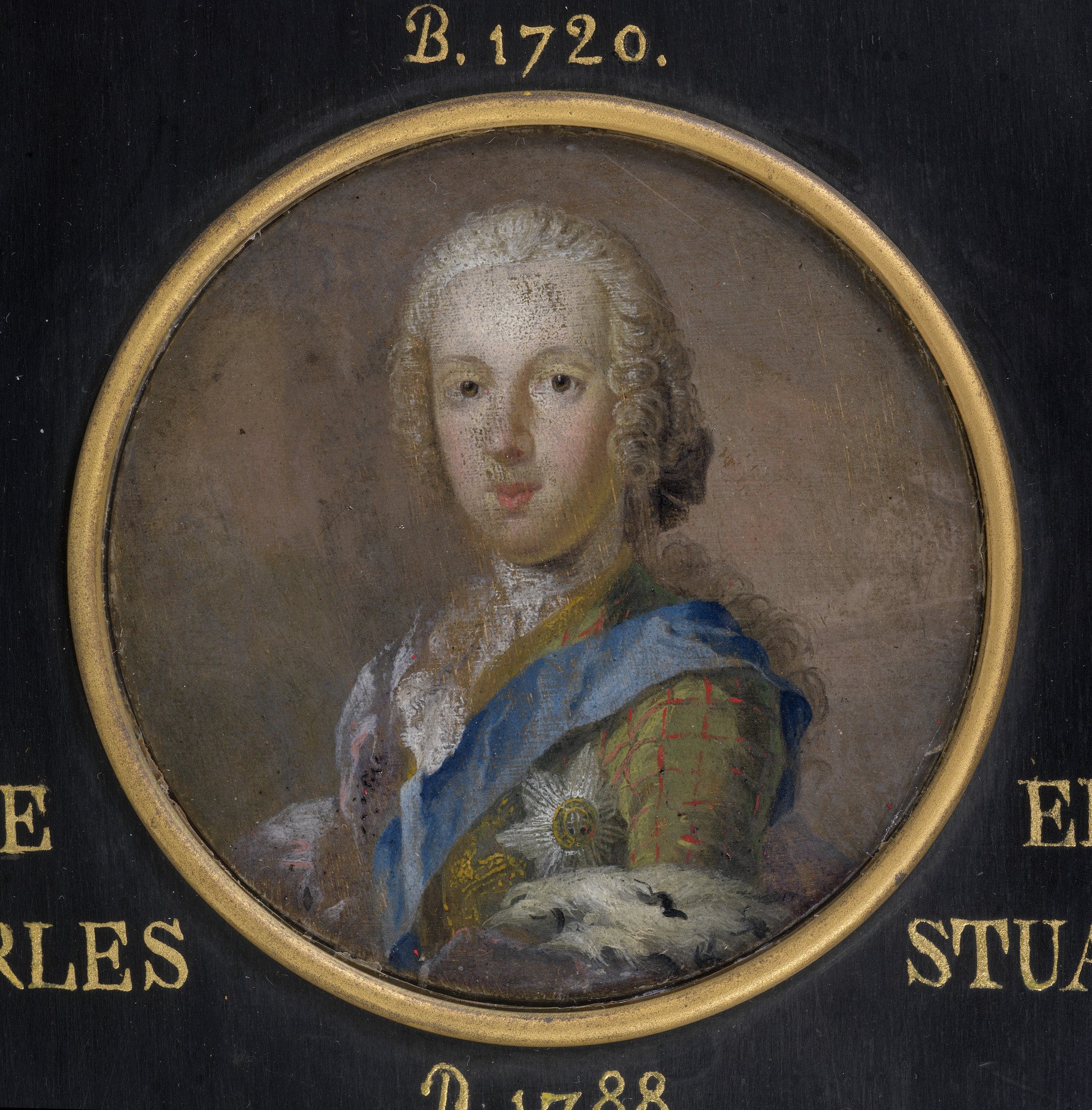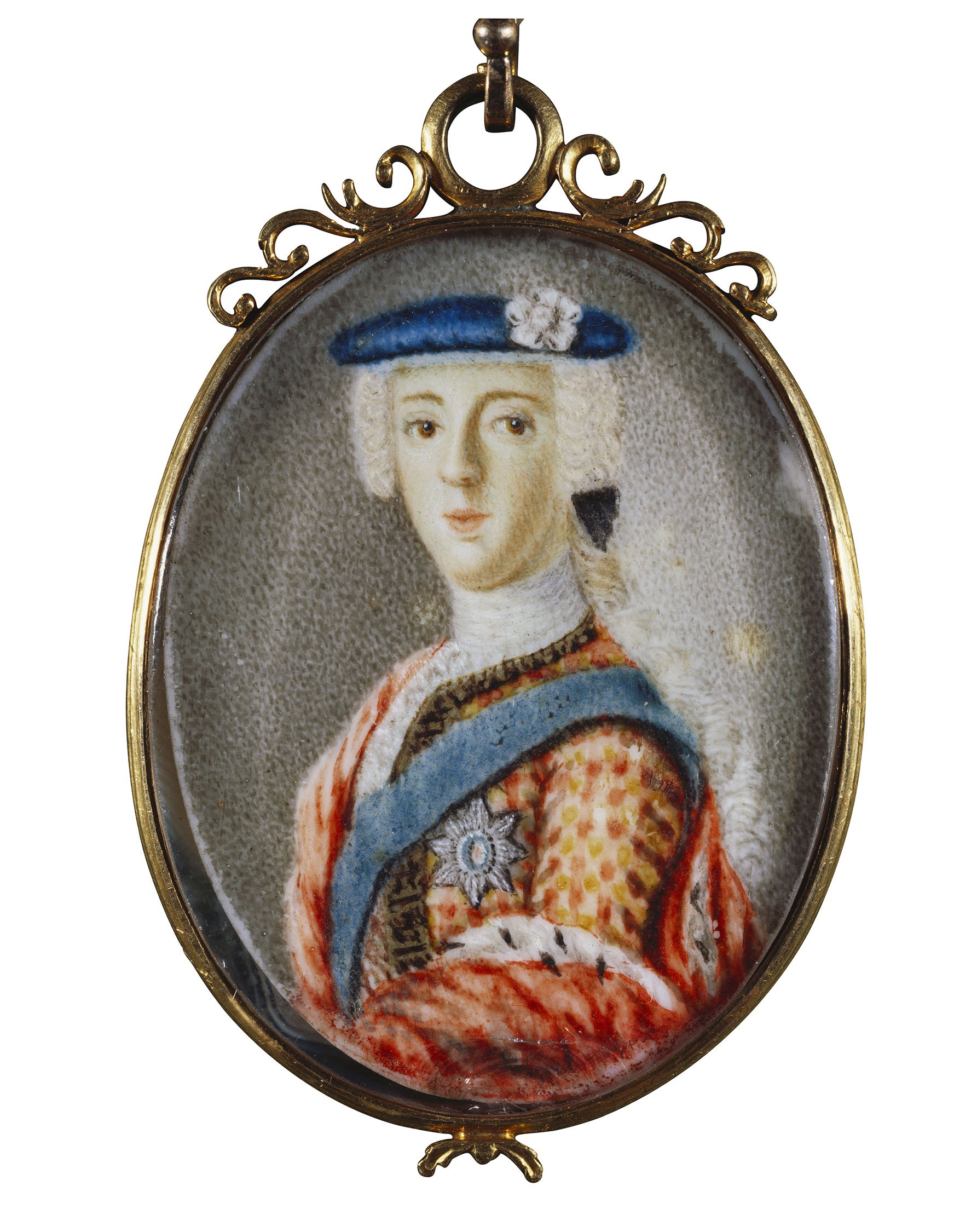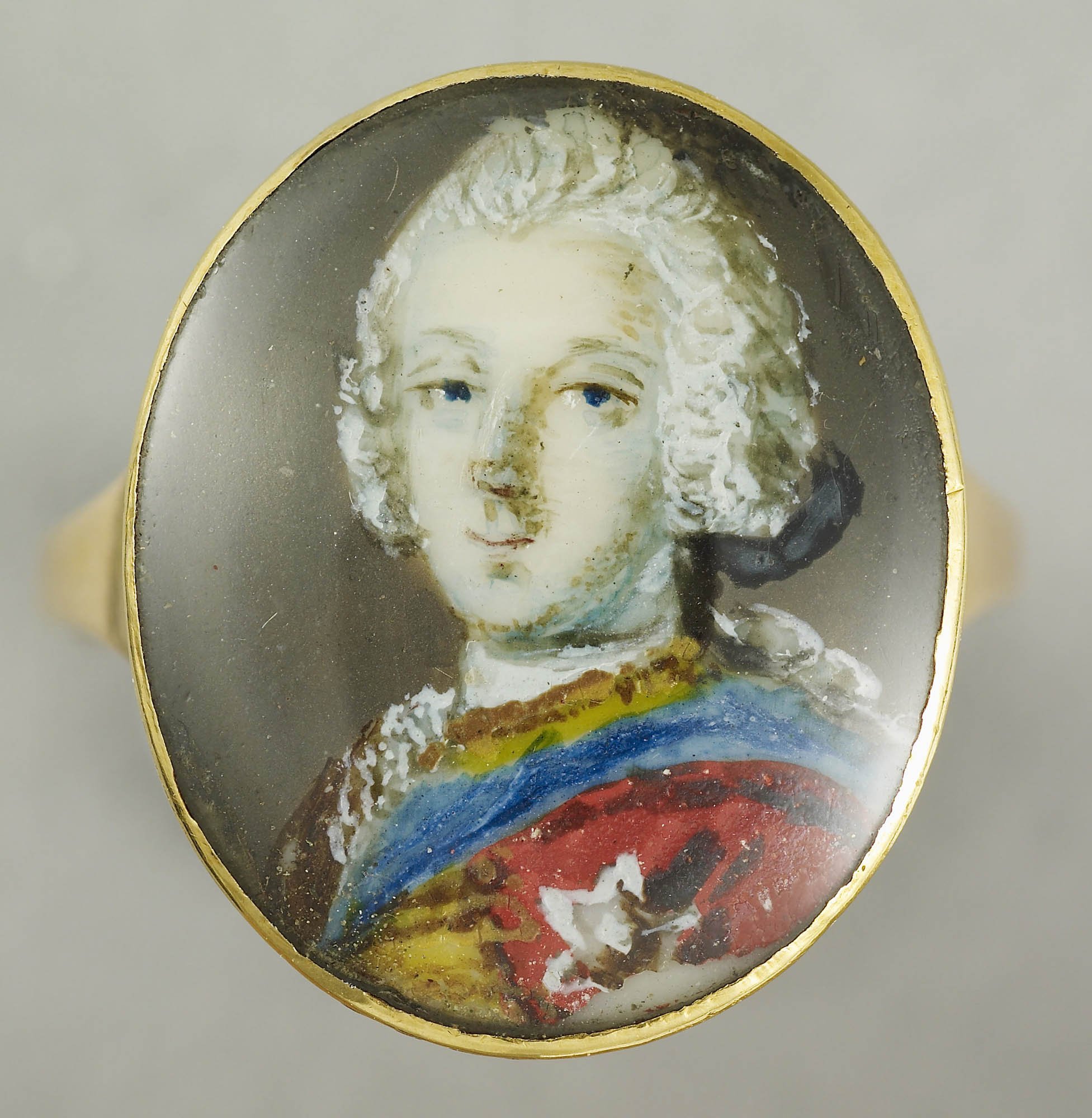Not so Bonnie Prince Charlie: The Likeness of Prince Charles Edward Stuart
By Rebecca Ingram | 30 November 2023
In August this year, researchers at the University of Dundee unveiled what they believe to be the true face of Bonnie Prince Charlie, Prince Charles Edward Stuart (1720-1788) [Fig. 1]. Although by today’s standards, it might be remarked that he wasn’t as handsome as his moniker suggests, his likeness is instantly recognisable from the Prince’s many portraits. However this is not an article about shifting beauty standards, but rather the importance of portraiture in the Jacobite campaign, and the distinct role of the portrait miniature.
The model was created by a team at the University’s Centre for Anatomy and Human Identification using a death mask of the Prince, who died in Rome at the age of 67 after suffering a stroke. The mask was painstakingly photographed and mapped to produce 3D models with state-of-the-art software. Experts then “de-aged” Charles to create a 24-year-old representation. This likeness therefore dates to the period he is best remembered: on the eve of the Jacobite uprisings of 1745 and the Battle of Culloden in April 1746. This period also saw a proliferation in Charles’s portraiture.
So who was he? Prince Charles Edward Stuart, a.k.a. ‘Bonnie Prince Charlie’, a.k.a. the ‘Young Pretender’, was son of James Francis Edward Stuart (1688-1766), the ‘Old Pretender’, and grandson of deposed King James II & VII of England, Ireland, and Scotland (1633-1701). James II had fled to France in 1688 following the invasion of Prince William of Orange and his wife Princess Mary (James II’s own daughter). Thereafter, James II lived in exile on the continent, from where his son and grandson would launch their campaigns to regain the throne.
Portraiture was of great importance to the campaign to restore James II’s line to the throne, known as the Jacobite campaign (Jacobus being the Latin for James). While James II had been crowned, his exiled son and grandson never occupied positions of power, so portraiture was a means to project their image as both statesmen and plausible leaders of an invasion. James Francis Edward Stuart and Charles, were therefore invariably portrayed wearing the Order of the Garter[1], the Order of the Thistle[2], and/or armour [Fig. 2].
James Francis Edward Stuart employed portraiture to promote himself and his sons from an early age. James had fled to the Italy in 1717, where the Pope grudgingly granted him a residence in Rome and where Charles would be born three years later. Rome not only boasted virtuoso native talent to whom the family would sit for portraits, such as celebrated court artist Domenico Duprà (1689-1770) and Antonio David (1698-1750), but attracted visiting artists from all over Europe. The exiled Stuarts therefore sat to the likes of Jean-Etienne Liotard (1702-1789), Louis-Gabriel Blanchet (1705-1772), and Brits such as Allan Ramsay (1713-1784), Giles Hussey (1710–1788), both of whom would play a particularly important role in Charles’s iconography.
Giles Hussey was studying and working in Rome between 1732 and 1737, as Charles was approaching his majority. Turning 18 on 31st December 1738, Charles took the Jacobite hopes upon his energetic shoulders. Hussey was from a Roman Catholic country family, and it’s likely this background that rendered a certain degree of tenderness to his very finely observed portraits of the prince, who embodied the hope of many British Catholics. Hussey’s portraits are striking in their similarity to the visage unveiled in the summer by the University of Dundee, in particular one previously with Philip Mould & Co. [Fig. 3]. On Hussey’s to England in 1736, he would produce many copies of his drawings of the Jacobite heirs made in Rome.
Allan Ramsay was also training in Rome at this time. It was there he first met the prince in 1736, but it was a portrait he painted later - on the eve of the Jacobite uprising on 1745 (dubbed "‘the 45”) - that would become a definitive image of Charles [Fig. 4].
Ramsay’s portrait is the original portrait type on which many other images are based, and yet it as the dissemination of this portrait type in miniatures, medals and engravings that made it so recognisable.[3] One stupendous oil portrait does not rally supporters from behind the gates of a lofty palace. Indeed, Ramsay’s oil is now believed to have been commissioned by Charles (or a member of his inner circle) as a basis for an engraving by Robert Strange (1721-92) [Fig. 5]. Recent research has suggested that the engraving was commissioned by the Prince himself in Edinburgh in 1745, when he had decided to march on London.[4] It’s striking that in the headiest days of the uprising, in the midst of strategizing the coup that had been his life’s aim, Charles was also thinking about portraiture.
Robert Strange (himself an ardent Jacobite supporter who fought at the Battle of Culloden) also designed banknotes in preparation for Charles’s victory and painted his portrait in miniature [Fig. 6]. Strange was appointed ‘Miniature Painter and Engraver’ to Prince Charles. In the same way as any monarch, Charles appointed an artist to produce miniatures he would present to his supporters.
Bonnie Prince Charlie’s supporters were often depicted holding a portrait miniature of him, illustrating their allegiance [Fig. 7]
Fig. 7
Portrait of a lady, believed to be Jenny (Jean) Cameron holding a miniature of Bonnie Prince Charlie in her right hand; Circle of Jeremiah Davison (c.1695-1745)
- Christie’s, 2000
Interestingly, where the oil portrait and engraving do not show Charles wearing Highland dress or an element of tartan, many miniatures and other small scale paintings do [Figs 8 & 9].[5] The Highland dress signified the Stuart claim and aligned Charles with the Scots on whose support his campaign entirely depended. While the engraving was commissioned in anticipation of Charles regaining the throne, whence it would be widely circulated across the whole of Britain, miniatures were more personal objects, exchanged and kept by Jacobite supporters.
Fig. 8 Portrait miniature of Prince Charles Edward Stuart; c.1745; attributed to Sir Robert Strange – Royal Collection Trust
Fig. 9 Portrait miniature of Prince Charles Edward Stuart, c.1745; after Sir Robert Strange – Royal Collection Trust
Being small and portable, miniatures were one of the ways supporters could display allegiance to one another. They were also easily hidden, which was vital as being found to be a Jacobite was a treasonable offence. It is for the same reason that Bonnie Prince Charlie’s portrait was sometimes disguised in an anamorphic image. One famous example being a drinks tray in the collection of the West Highland Museum, Scotland [Fig. 10].
The most devotional of Jacobite portraits must be the miniatures set into jewellery [Fig. 11 and see also Victoria and Albert Museum 6-1899]. A portrait that is not only kept on your person at all times, but worn on the body, is significant of a fervent commitment to the cause.
Fig. 11 Ring with a portrait miniature of Prince Charles Edward Stuart; c. 1745; British School – Royal Collection Trust
Arguably the quality of the likeness deteriorates with portraits so small, but the aura of artworks such as this – held and worn by people from history who were perhaps willing to die for their beliefs – is quite something to behold. It’s an intimate quality almost unique to the portrait miniature and epitomised here.
Further Reading:
https://www.dundee.ac.uk/stories/bonnie-prince-charlie-recreation-shows-face-jacobite-rising
Other objects of interest:
https://www.rct.uk/collection/search#/68/collection/441923/thistle-badge
Footnotes:
[1] The Order of the Garter was the highest and oldest Order of Chivalry in Britain. Members include the monarch, senior royal family and 24 others chosen personally by the Sovereign.
[2] King James II & VII established the Order of the Thistle (reinstituting an ancient chivalric tradition) in 1687 - to reward Scottish peers who supported the king's political and religious aims. As his grandson, the ‘Old Pretender’ maintained the iconography and symbolism of the Order of the Thistle.
[3] During the infamous episode following Charles’s escape from Culloden, when he was spirited away by Flora MacDonald in disguise as a maidservant called Betty Burke, doubts about his disguise were founded not just on his stature but his distinct oval face – so recognisable from his well-known image.
[4] https://www.nationalgalleries.org/art-and-artists/features/jacobite-icon-allan-ramsay%E2%80%99s-portrait-prince-charles-edward-stuart
[5] See also the small scale ‘Harlequin’ portrait type, for example https://www.christies.com/en/lot/lot-1948365











